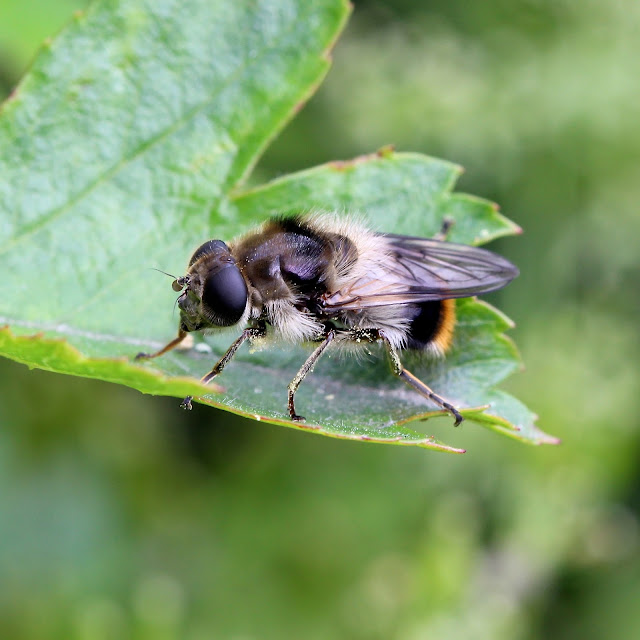This is Volucella bombylans var. bombylans.
And this is a red-tailed bumblebee worker.
This is Volucella bombylans var. plumata.
And this is a white-tailed bumblebee.
Another, less common hoverfly that mimics a bumblebee is Merodon equestris, the large narcissus fly. Its larvae develop in daffodil bulbs. The adult fly's colouring is quite variable - this male is perhaps a mimic of the common carder bee. He was defending a patch of flowers against all comers, chasing off any bumblebee that tried to land.
This is a common carder bee.
For a well illustrated guide to hoverflies that mimic bumblebees (in Ireland) click here.
30 June 2015 update. After posting the above yesterday I found this fly this morning at Banks' Pond. I think it is a female hoverfly with an unusual colour form and the unfortunate name of Volucella bombylans var. haemorrhoidalis, perhaps mimicking an early bumblebee (Bombus pratorum).
And here is a male Bombus pratorum.









I uncovered a red tailed bumblebee nest while trimming the drive today. Many rather more red tailed than your one?
ReplyDeleteYour last hoverfly is probably Cheilosia illustrata. Volucella bombylans has feathery antennae.
ReplyDeleteThanks for the correction. There is a lot to learn.
Delete